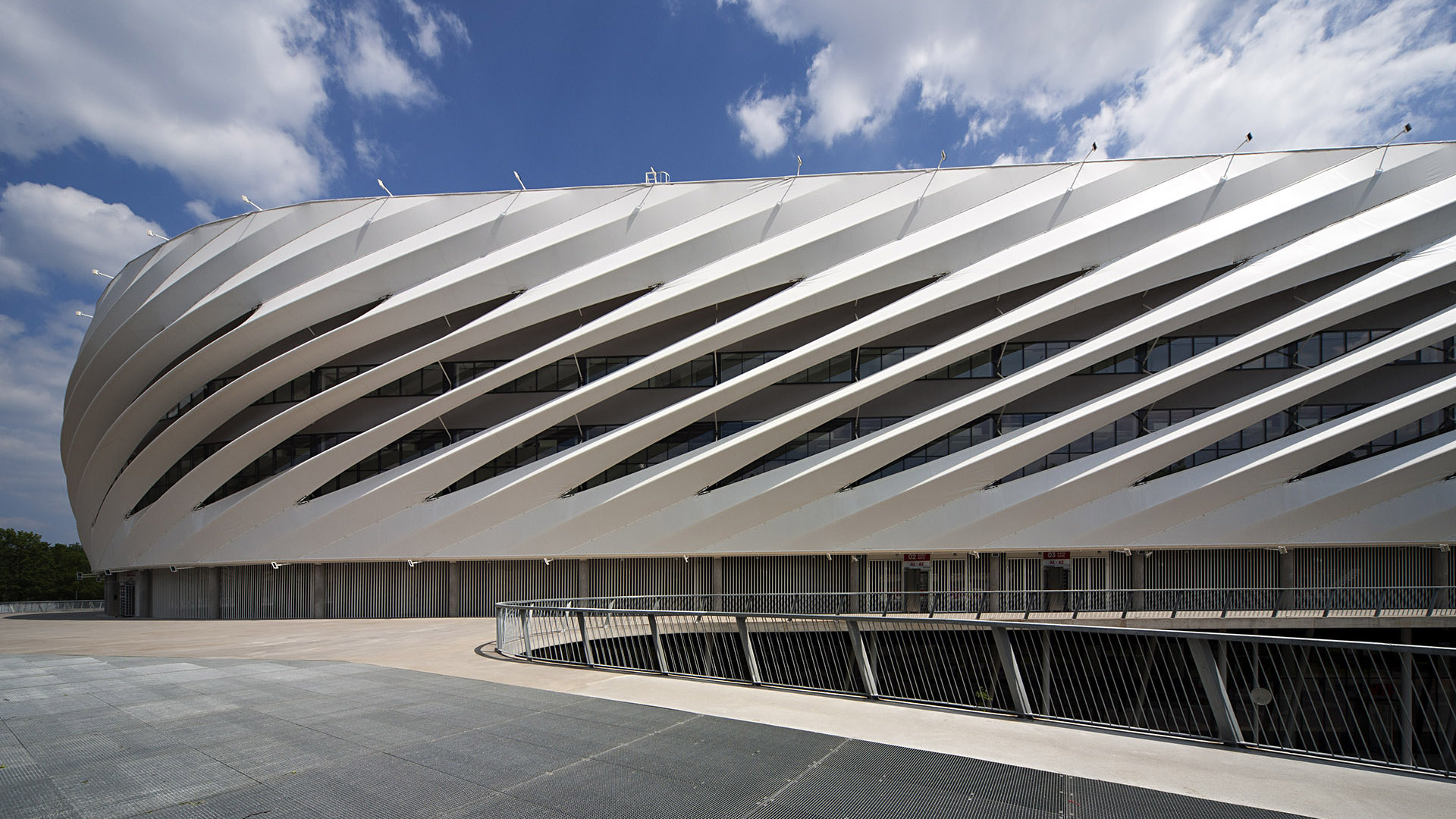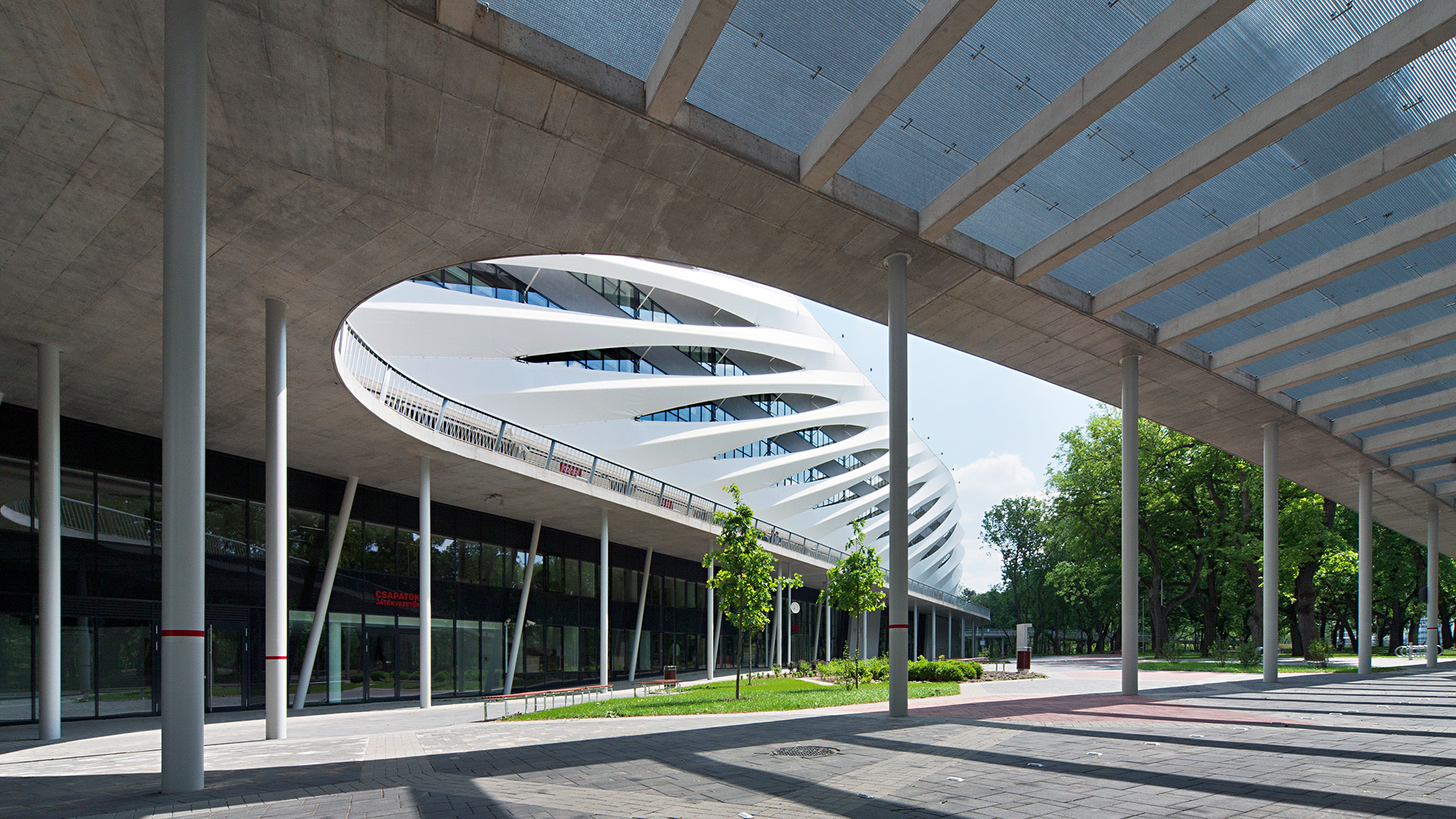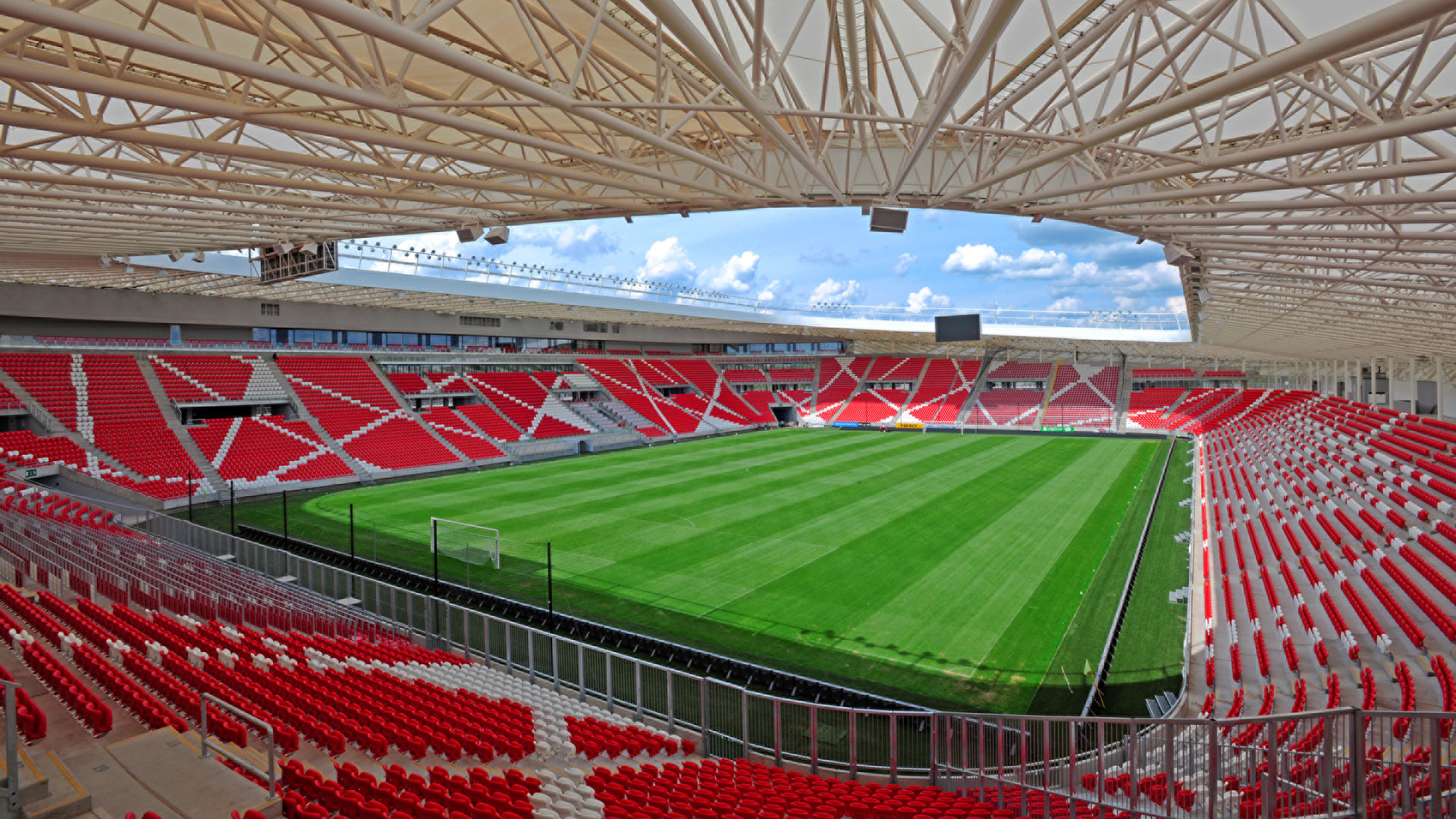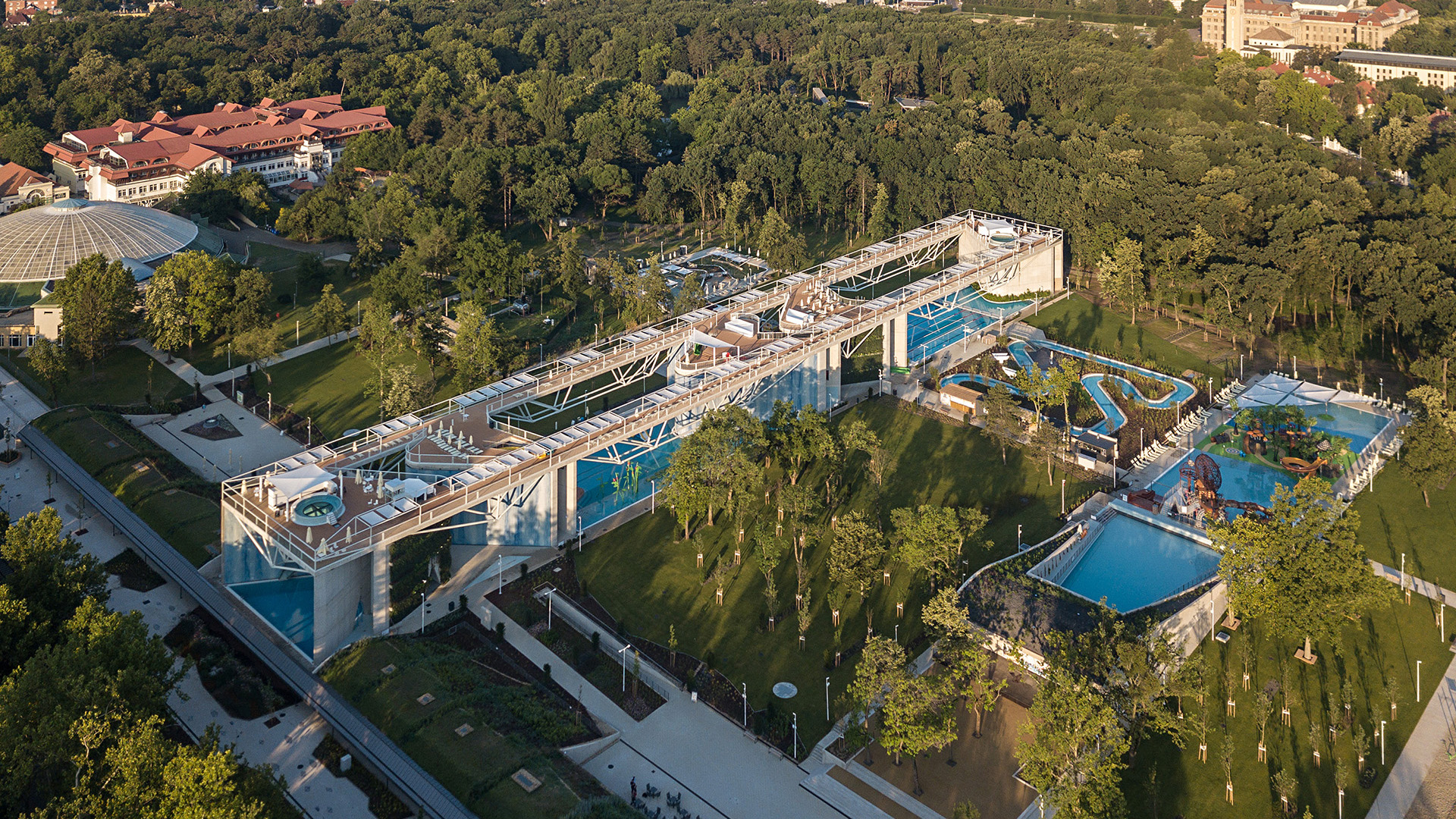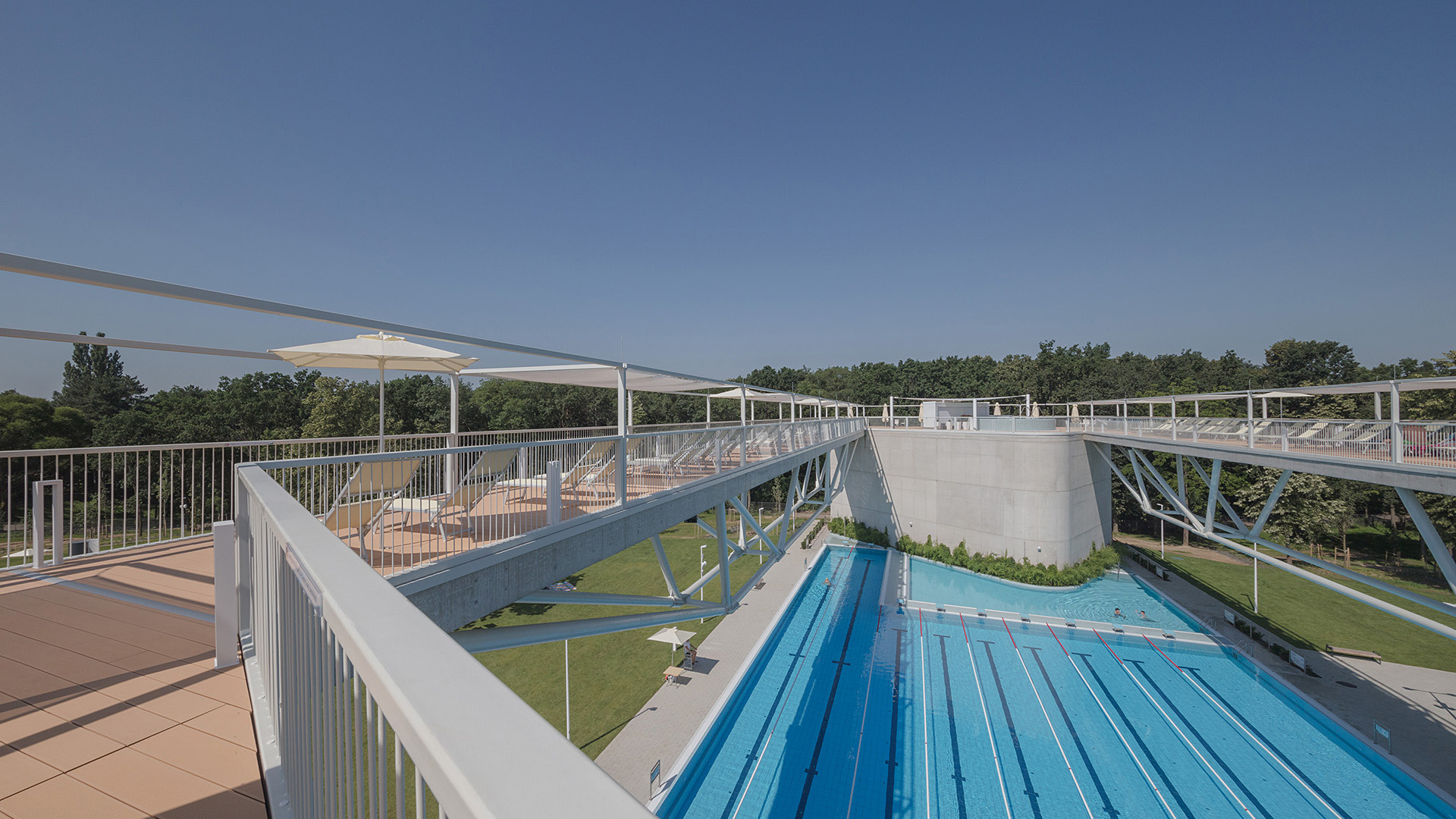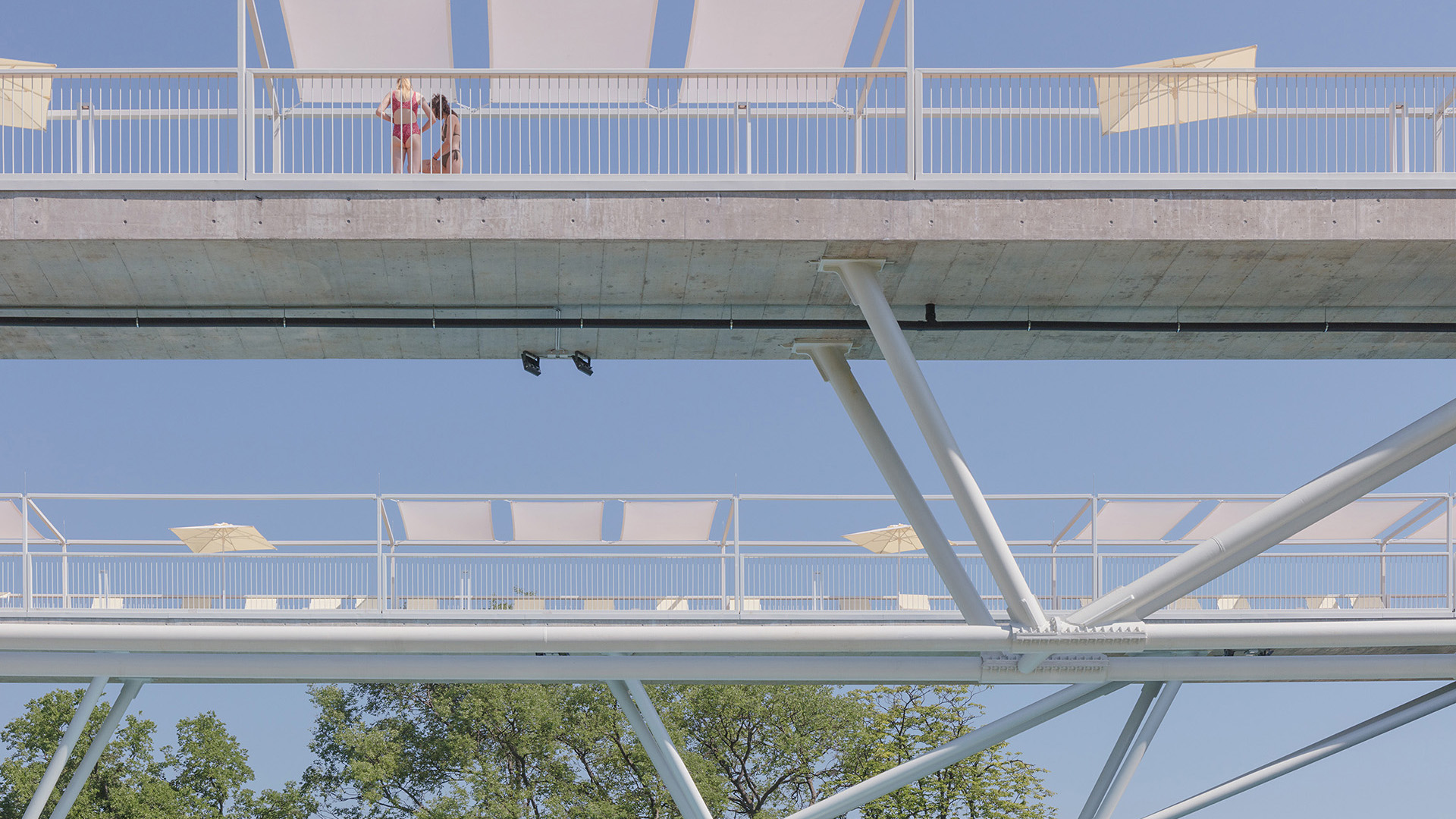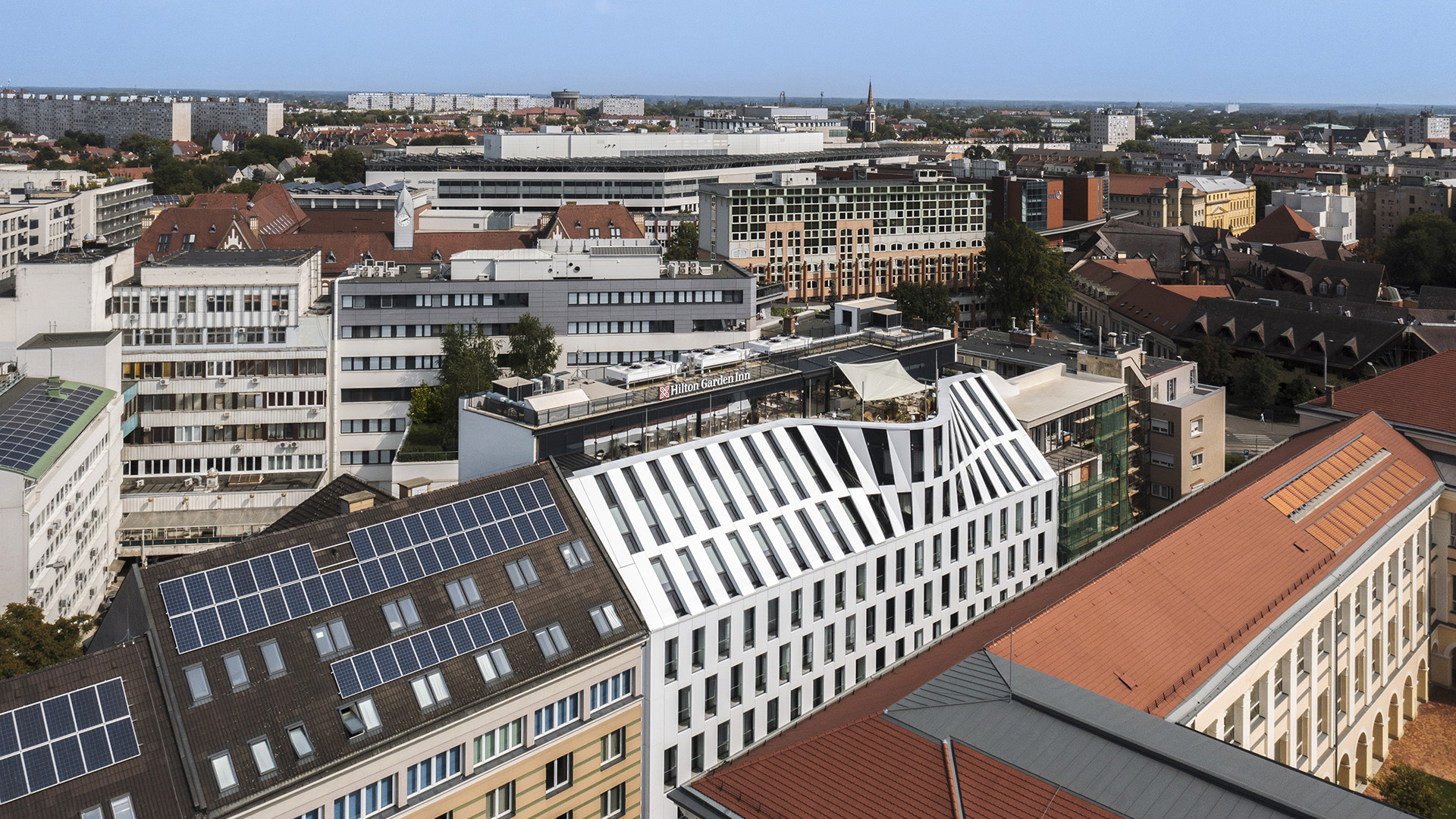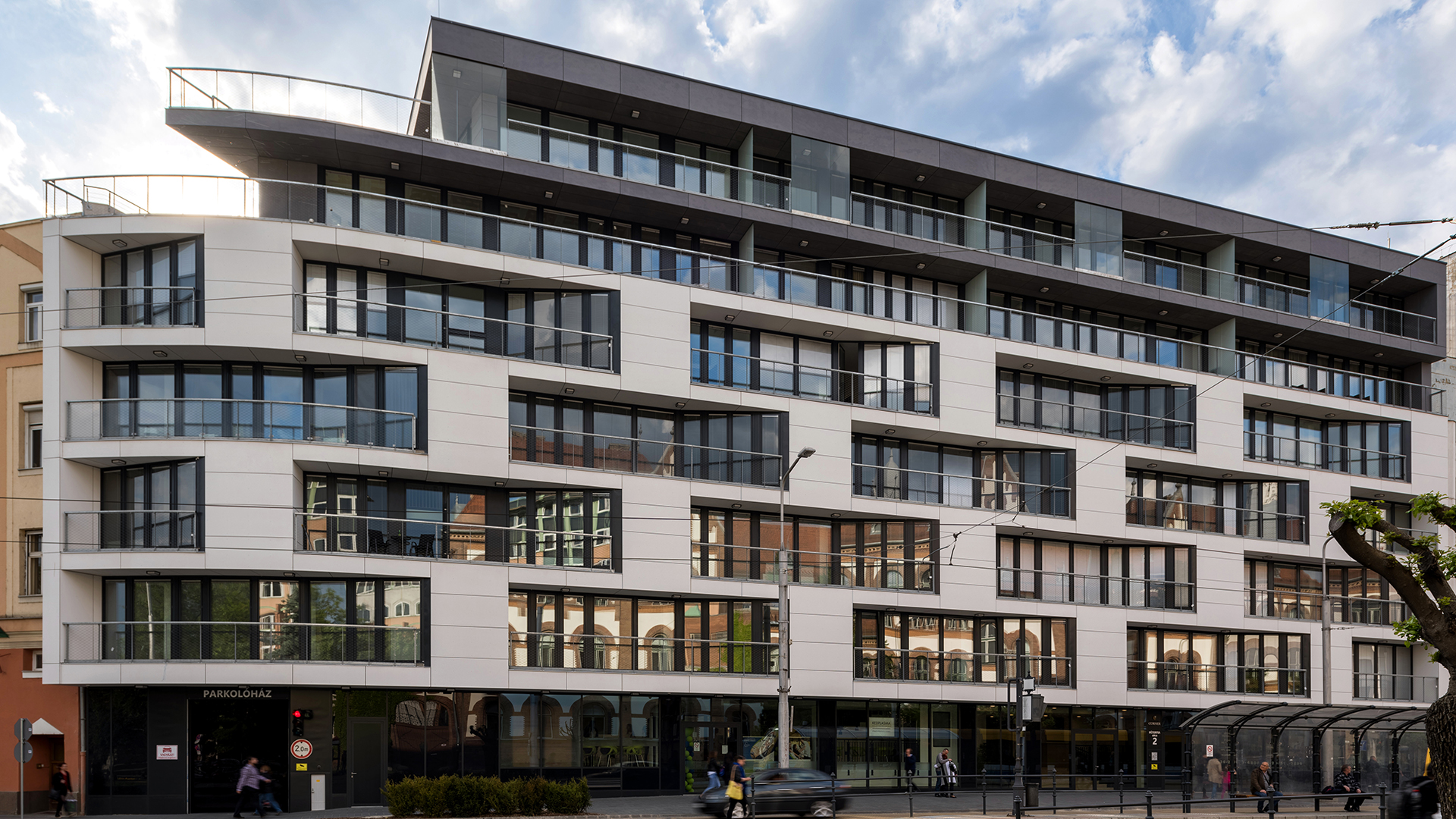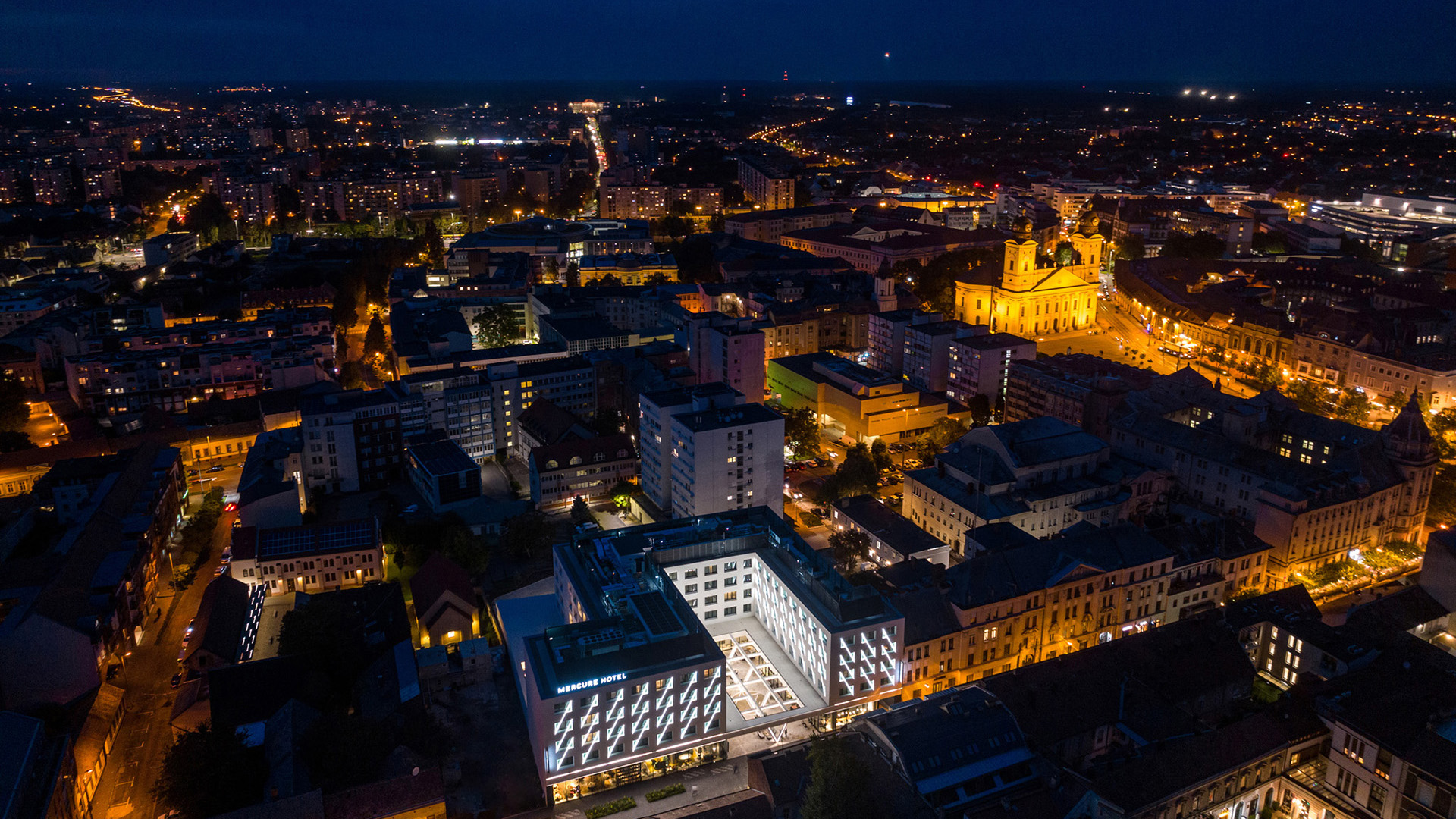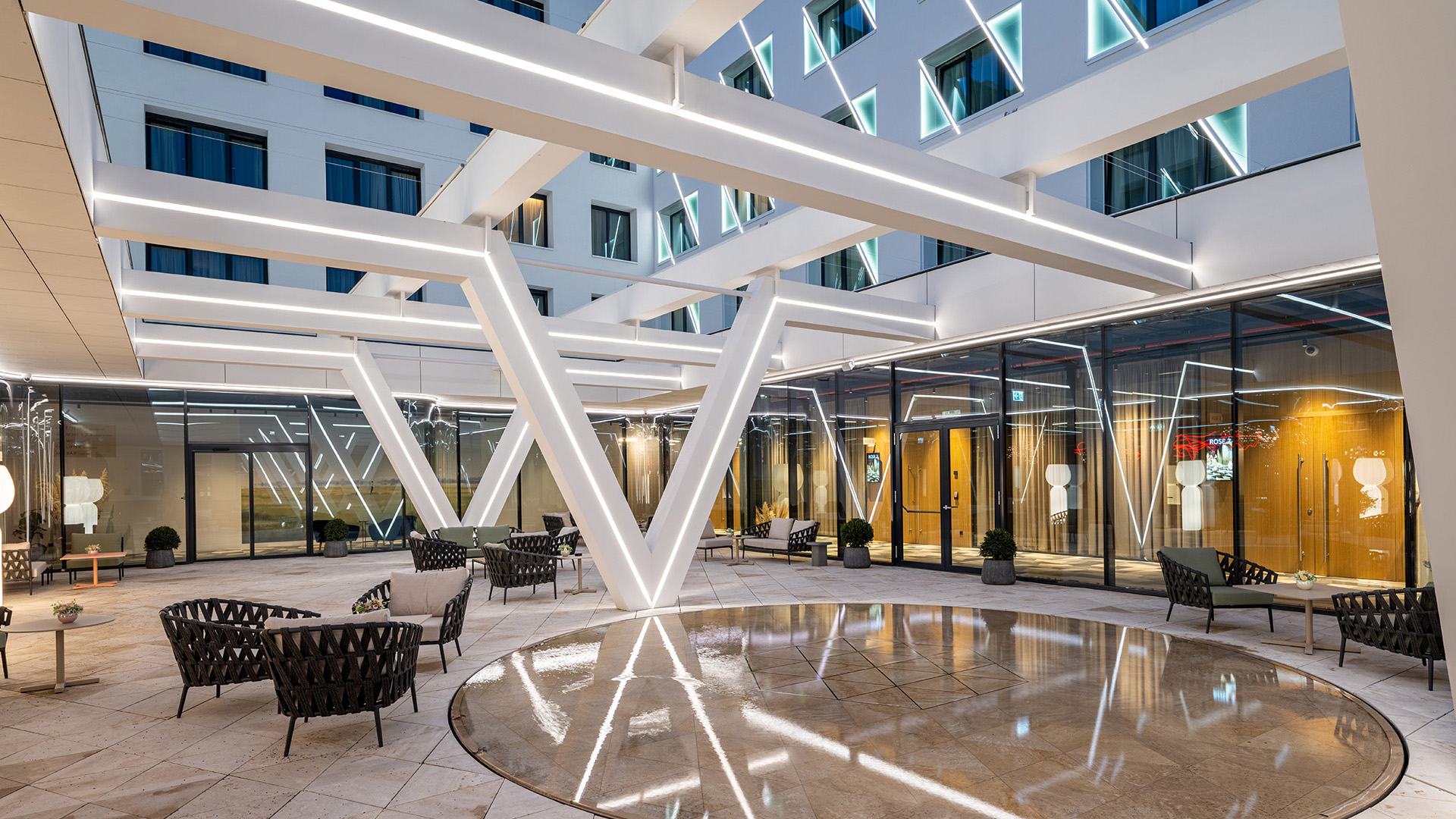Innovative Architecture and the Urban Fabric – Contrast or Opportunity?
July 18, 2025
Between the modestly integrated building and the flamboyant icon lies a broad spectrum of architectural projects around the world. A well-functioning urban fabric resembles a living community: every building shapes the city’s daily rhythm, its visual identity, and long-term memory. As architects, we constantly explore how the structures we design can fit into this fabric—while still remaining unique and full of character.
When visiting a small town during a holiday, it’s often the local atmosphere and a few emblematic buildings that stay with us most vividly—those that stand out due to their historical, cultural, or religious significance. These structures often serve as spatial reference points—we experience them as landmarks.
Examples of such symbolic buildings include the Oslo Opera House by Snøhetta, the Elbphilharmonie in Hamburg by Herzog & de Meuron, or in Debrecen, the Nagyerdei Stadium and the Aquaticum Water Park. These are not merely public buildings—they become memories. Through their forms, their ability to bring communities together, and their iconic presence, they command attention and define place.
A cityscape becomes truly pleasant and liveable when landmark buildings appear in the right context. There are times when our studio is asked to design a building that is intentionally neutral—one that, through its massing and façade, blends seamlessly into the streetscape, forming a respectful backdrop to historically or culturally significant icons. These buildings do not dominate visually, yet they play a key role in shaping the overall urban experience.
In the historic centre of Debrecen, where we have been involved in various infill developments near the Great Reformed Church, the Reformed College, and Kossuth Square, we often work along the principles of “background architecture”.The proportions, cornice lines, and façade articulation of the Hilton Garden Inn and the Péterfia Corner follow a precise geometric logic, aligning with the order established by neighbouring structures. Their character is defined by restraint, functionality, sustainability, and durability—qualities that offer clear, rational architectural responses to often highly complex challenges.
Even buildings designed to play a background role can have a strong identity—consider the palaces along Andrássy Avenue in Budapest. With their symmetrical façades, rhythmic windows, balconies, and columns, these buildings form a unified urban wall along the city’s most iconic historical boulevard between Oktogon and Deák Ferenc Square. Yet their richly detailed and elegant façades, shaped by individual client needs, make each one a distinct architectural statement.
In our residential development on Bethlen Street in Debrecen, contextual integration was essential. However, the presence of a small, locally protected historic house from the early 1900s gave a unique twist to the project. While the new Mercure Hotel maintains the continuity of the street frontage, its entrance zone features an elegant outdoor atrium with a cosmopolitan feel and striking formal character—offering a memorable visual moment and a distinct identity within the ensemble.
The essence of innovative design lies in moving beyond the expected and offering new solutions. We believe that just like people, buildings are individual and valuable in their own right. Whatever role they play within the city, they can still be exciting and fresh. In our work, we study the brief and the possibilities, we experiment, and we search for new paths—often finding compelling, practical answers to questions that initially seemed impossible.
Our goal is not simply to place new icons on the urban map, but to create environments where every building—whether in the foreground or the background—contributes to a livable, lovable, and enduring urban whole.
